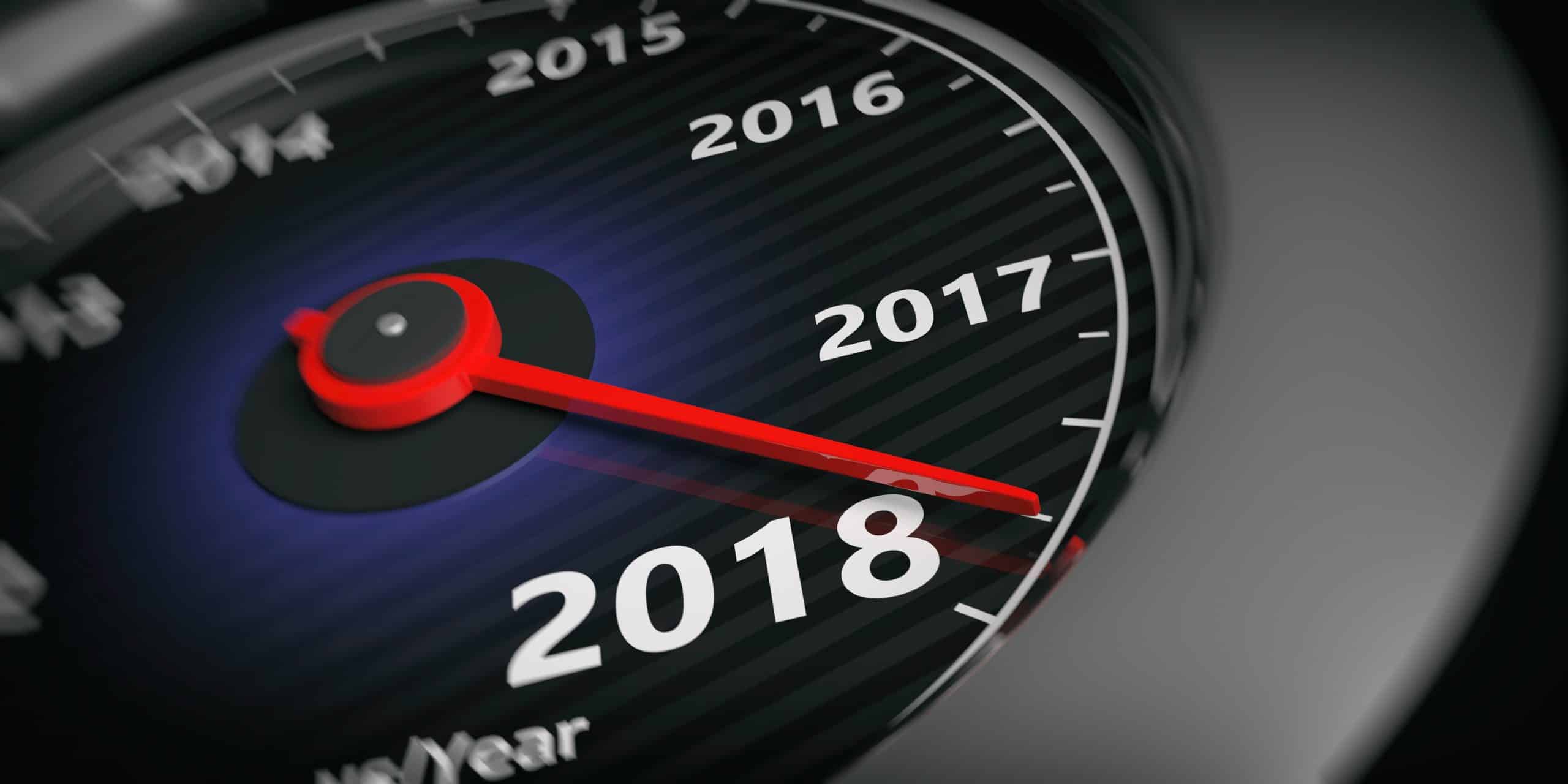It’s the start of a new year, and many of us have made new year resolutions around finances and fitness. But keeping our cars healthy is just as important, so we’ve pulled together some commitments that all car owners should be making in 2018.
Clean & Clear
Let’s start with an easy resolution…make a commitment to clean your car regularly.
Obviously, everything looks better when it’s clean, but there is also an important safety aspect to regularly washing your car. A bright and shiny vehicle has much more visibility on the road than a dull and dirty one. Lights covered in mud and debris will not work as effectively, and this can increase the risk of an accident.
Remember, if your car lights are not clean, then you might not be seen.
If you want to save money in the new year, it’s worth remembering that dirt and grime on the exterior of your car can lead to rust and corrosion. Left untreated, you could be left facing expensive repair costs further down the road. And if you’re trying to sell your car, rust is not an attractive feature for potential buyers!
Safety First
Being more safety-conscious in 2018, should be your next resolution.
One of the biggest causes of driver distraction is mobile phones, which is not only extremely dangerous, and the cause of 1 in 4 accidents, but is also illegal. If caught using a phone when driving, the minimum penalty is 6 points and a £200 fine; but you could potentially also face a driving ban, depending on the severity of the situation.
Make a pledge this year to avoid the temptation of looking at your phone. The simplest solution is to turn it off, but if you don’t want to do that then put it somewhere out of reach, such as in your glove box. If you still can’t control the urge, did you know there are apps you can install that locks the phone while the car is in motion over a certain speed.
Speed limits are in place for a reason, so start the new year with a new attitude towards speed awareness. Here is a reminder of UK speed limits for cars, motorcycles, car-derived vans and dual-purpose vehicles:
- Built up areas – 30 mph (unless you see signs stating otherwise)
- Single carriage ways (national speed limit sign) – 60 mph
- Dual carriage ways (national speed limit sign) – 70mph
- Motorways – 70 mph
Warning Signs
A sensible resolution for car owners is to address any problems as soon as they appear.
If you hear a strange noise or your car is not behaving normally, it’s always better to get it checked out by a professional rather than leaving it and then facing huge repair costs further down the line.
Immediate issues are often flagged to drivers as a warning light, illuminated on the dashboard, but do you know what all the lights mean?
Warning lights may vary depending on car makes and models (check your individual handbook for more details), but here five common warning lights that you may see illuminated on your dashboard.
![]()
Battery warning light – this will come on for a few seconds when you first start your car, but if it remains illuminated, there could be a fault with your battery or your car’s electrical system. Left unchecked, eventually your car won’t start…probably at the most inconvenient time!
![]()
Brake system warning light – if this symbol is flashing on your dashboard then there’s something wrong with your braking system, or your brake fluid has run low. Whatever the reason, a failure with your braking could be fatal so you must contact a garage immediately.
![]()
Coolant warning light – if this is illuminated it means that your coolant fluid level is running low and needs topping up as soon as possible. Without coolant, your engine will overheat and this could lead to an expensive repair bill.
![]()
Engine warning light – this can sometimes just be a sign of a faulty electrical sensor or broken wire, but could also be a major mechanical issue, so get it checked out at a garage as soon as possible to avoid potentially expensive damage to your car.
![]()
Oil warning light – if this is illuminated it means that your oil level is running low and needs topping up as soon as possible. Oil keeps your engine lubricated, and without it you are looking at expensive engine damage.
For long-term car health, commit to booking in for an annual service, where many of the elements above will be checked for you. A basic service will normally include tyres, brakes, battery, lights, suspension, steering, exhaust, coolant levels and electrical items. (May vary, please check with your garage).
Tread Carefully
One of the most important checks you can make on your vehicle is the tyre tread depths. The minimum legal tread depth for cars in the UK and Europe is 1.6mm. If your tread depth falls below this, not only is it illegal, but it is also extremely dangerous.
Without the adequate tread depth, tyres may not be able to grip the road safely, particularly in wet weather.
So, your next resolution for 2018 is to avoid accidents, and potentially a fine and penalty points, by committing to checking your tyre treads depths on a regular basis. This is quick and easy to do, using just a 20p coin, so make sure you keep one handy inside your car.
Take the 20p test, as recommended by the RAC, by simply inserting the coin into the tread groove on your tyre. If you can’t see the outer band of the coin, your tyres are above the legal limit. If you can see the outer band of the coin, your tyre may be illegal and unsafe.

Hydrated and Happy
We need fluids to keep ourselves hydrated, and it’s the same for our cars. Although most vehicle fluids are checked during your annual service, it is important to keep an eye on levels yourself as usage can fluctuate during bad weather.
Make your final resolution to dedicate a few minutes every couple of weeks to check your oil, coolant/anti-freeze and screen wash fluid levels.
Performing these checks will keep your engine in good working order and helps to avoid any unexpected breakdowns.
- Oil – Check the dipstick every couple of weeks and before long journeys
Check your oil by pulling out the dipstick, cleaning it with a cloth and putting it back in. Pull the dipstick out again and check that the oil level is marked in between the upper and lower marks on the stick. If it is nearer the lower mark on the stick, you need to top it up.
Your car manual will tell you which type of oil the manufacturer recommends for your car. This information is also available from various sources online, such as the Halfords website where you can enter your registration number to see recommended oils for your vehicle.
- Screen wash – Check and top up regularly
Dirty windscreens can obstruct your view and potentially cause accidents, so make sure you always have good visibility. Locate the screen wash filler cap under your bonnet and simply pour the fluid in. Use a proper screen wash fluid, not just water, as this is not as effective in removing road grime.
Screen wash fluid can be bought at most garages, petrol stations and supermarkets and it’s a good idea to keep a bottle in the boot of your car.
- Coolant/Anti-Freeze – Check and top up as necessary
With most modern cars, the coolant should need topping up but it is easy to do a quick check of the level so you can identify any problems early, such as a leak.
Check your car manual for the correct location of your coolant tank under the bonnet and check that the fluid level is sitting between the minimum and maximum marks on the side of the tank.
If the coolant does need topping up, remember to only do this when the engine is cold or you could get burnt or scalded. As it is not normal for coolant levels to drop, make sure you take the car to a garage as soon as possible to be checked.
We hope these resolution suggestions will help you stay safe on the roads, and maintain a happy and healthy relationship with your car in 2018!
Sources:
Sourced from www.rac.co.uk. (2017). Car Dashboard Warning Lights – What do they Mean?. Available: https://www.rac.co.uk/breakdown-cover/car-dashboard-warning-lights-meaning. Last accessed 05/01/2018.
Marconi, J. (2017). 6 Must Do New Year’s Resolutions For Your Car in 2017. Available: http://www.osceolagarage.com/6-must-do-new-years-resolutions-for-your-car-in-2017/. Last accessed 05/01/2018.
Sourced from www.gov.uk. (2017). Using mobile phones when driving. Available: https://www.gov.uk/using-mobile-phones-when-driving-the-law. Last accessed 05/01/2018.
Sourced from www.theaa.com. (2017). Checking your coolant and cooling fan. Available: https://www.theaa.com/breakdown-cover/advice/how-to-check-your-engine-coolant. Last accessed 05/01/2018.
Sourced from www.ford.co.uk. (2017). Performing Self Checks. Available: https://www.ford.co.uk/owner/service-and-maintenance/service-repair/vehicle-servicing/self-checks. Last accessed 05/01/2018.
Sourced from www.rac.co.uk. (2017). Tyre tread depth and tyre safety checks. Available: https://www.rac.co.uk/drive/advice/tyres/checking-tyre-tread/. Last accessed 05/01/2018.
Sourced from www.gov.uk. (2017). Speed limits. Available: https://www.gov.uk/speed-limits. Last accessed 05/01/2018.
Staff, U. (2016). 5 reasons keeping your car clean makes life better – Sponsored. Available: http://triblive.com/lifestyles/morelifestyles/11421461-74/clean-car-road. Last accessed 05/01/2018.
Sourced from www.tyresafe.org. (2016). Tread Depth. Available: https://www.tyresafe.org/tyre-safety/tread-depth/. Last accessed 05/01/2018.
Sourced from www.roberts-autorepair.com. (2015). HOW TO AVOID TEXTING WHILE DRIVING. Available: http://www.roberts-autorepair.com/blog/how-to-avoid-texting-while-driving/. Last accessed 05/01/2018.
Barth, L. (2012). 10 New Year’s safety resolutions for drivers. Available: https://www.consumerreports.org/cro/news/2012/12/10-new-year-s-safety-resolutions-for-drivers/index.htm. Last accessed 05/01/2018.


